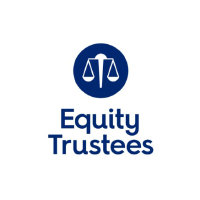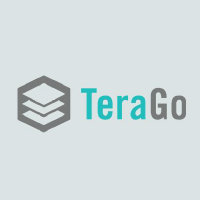
Choice Properties Real Estate Investment Trust
TSX:CHP.UN


| US |

|
Johnson & Johnson
NYSE:JNJ
|
Pharmaceuticals
|
| US |

|
Berkshire Hathaway Inc
NYSE:BRK.A
|
Financial Services
|
| US |

|
Bank of America Corp
NYSE:BAC
|
Banking
|
| US |

|
Mastercard Inc
NYSE:MA
|
Technology
|
| US |

|
UnitedHealth Group Inc
NYSE:UNH
|
Health Care
|
| US |

|
Exxon Mobil Corp
NYSE:XOM
|
Energy
|
| US |

|
Pfizer Inc
NYSE:PFE
|
Pharmaceuticals
|
| US |

|
Palantir Technologies Inc
NYSE:PLTR
|
Technology
|
| US |

|
Nike Inc
NYSE:NKE
|
Textiles, Apparel & Luxury Goods
|
| US |

|
Visa Inc
NYSE:V
|
Technology
|
| CN |

|
Alibaba Group Holding Ltd
NYSE:BABA
|
Retail
|
| US |

|
JPMorgan Chase & Co
NYSE:JPM
|
Banking
|
| US |

|
Coca-Cola Co
NYSE:KO
|
Beverages
|
| US |

|
Walmart Inc
NYSE:WMT
|
Retail
|
| US |

|
Verizon Communications Inc
NYSE:VZ
|
Telecommunication
|
| US |

|
Chevron Corp
NYSE:CVX
|
Energy
|
Utilize notes to systematically review your investment decisions. By reflecting on past outcomes, you can discern effective strategies and identify those that underperformed. This continuous feedback loop enables you to adapt and refine your approach, optimizing for future success.
Each note serves as a learning point, offering insights into your decision-making processes. Over time, you'll accumulate a personalized database of knowledge, enhancing your ability to make informed decisions quickly and effectively.
With a comprehensive record of your investment history at your fingertips, you can compare current opportunities against past experiences. This not only bolsters your confidence but also ensures that each decision is grounded in a well-documented rationale.
Do you really want to delete this note?
This action cannot be undone.

| 52 Week Range |
12.8174
15.35
|
| Price Target |
|
We'll email you a reminder when the closing price reaches CAD.
Choose the stock you wish to monitor with a price alert.

|
Johnson & Johnson
NYSE:JNJ
|
US |

|
Berkshire Hathaway Inc
NYSE:BRK.A
|
US |

|
Bank of America Corp
NYSE:BAC
|
US |

|
Mastercard Inc
NYSE:MA
|
US |

|
UnitedHealth Group Inc
NYSE:UNH
|
US |

|
Exxon Mobil Corp
NYSE:XOM
|
US |

|
Pfizer Inc
NYSE:PFE
|
US |

|
Palantir Technologies Inc
NYSE:PLTR
|
US |

|
Nike Inc
NYSE:NKE
|
US |

|
Visa Inc
NYSE:V
|
US |

|
Alibaba Group Holding Ltd
NYSE:BABA
|
CN |

|
JPMorgan Chase & Co
NYSE:JPM
|
US |

|
Coca-Cola Co
NYSE:KO
|
US |

|
Walmart Inc
NYSE:WMT
|
US |

|
Verizon Communications Inc
NYSE:VZ
|
US |

|
Chevron Corp
NYSE:CVX
|
US |
This alert will be permanently deleted.
Choice Properties Real Estate Investment Trust
Choice Properties Real Estate Investment Trust operates as a titan within the Canadian real estate market, skillfully navigating the complexities of commercial property investments. Established with a strategic vision to deliver long-term value, the trust boasts a diverse portfolio that spans retail, industrial, and office properties across Canada. At its core, Choice Properties is dedicated to leasing and managing spaces that cater to a variety of tenant needs, but with a significant emphasis on retail stores. The anchor tenant of this thriving enterprise is Loblaw Companies Limited, Canada's largest food retailer, which provides a steady stream of rental income and enhances the trust's stability. By meticulously maintaining a high occupancy rate and curating a mix of reliable, creditworthy tenants, Choice Properties ensures a consistent cash flow, enhancing its appeal to income-seeking investors.
Intriguingly, the trust's revenue model is underpinned by its ability to structure long-term leases that often include rent escalations tied to inflation, ensuring that income keeps pace with rising costs over time. Choice Properties also partakes in strategic developments and acquisitions, methodically expanding its portfolio to optimize asset value and income potential. It has embraced the trend of mixed-use developments, integrating residential components into some of its properties to exploit synergies and capitalize on urban densification. As a result, the trust not only reaps the benefits of incremental rental income but also gains valuation uplifts from these multifaceted developments. By continuously striking a balance between portfolio diversification, strategic acquisitions, and disciplined financial management, Choice Properties REIT crafts a narrative of resilience and growth, maintaining its foothold in a competitive industry.

Choice Properties Real Estate Investment Trust operates as a titan within the Canadian real estate market, skillfully navigating the complexities of commercial property investments. Established with a strategic vision to deliver long-term value, the trust boasts a diverse portfolio that spans retail, industrial, and office properties across Canada. At its core, Choice Properties is dedicated to leasing and managing spaces that cater to a variety of tenant needs, but with a significant emphasis on retail stores. The anchor tenant of this thriving enterprise is Loblaw Companies Limited, Canada's largest food retailer, which provides a steady stream of rental income and enhances the trust's stability. By meticulously maintaining a high occupancy rate and curating a mix of reliable, creditworthy tenants, Choice Properties ensures a consistent cash flow, enhancing its appeal to income-seeking investors.
Intriguingly, the trust's revenue model is underpinned by its ability to structure long-term leases that often include rent escalations tied to inflation, ensuring that income keeps pace with rising costs over time. Choice Properties also partakes in strategic developments and acquisitions, methodically expanding its portfolio to optimize asset value and income potential. It has embraced the trend of mixed-use developments, integrating residential components into some of its properties to exploit synergies and capitalize on urban densification. As a result, the trust not only reaps the benefits of incremental rental income but also gains valuation uplifts from these multifaceted developments. By continuously striking a balance between portfolio diversification, strategic acquisitions, and disciplined financial management, Choice Properties REIT crafts a narrative of resilience and growth, maintaining its foothold in a competitive industry.
Strong Quarter: Choice Properties delivered a strong Q3, driven by high demand for grocery-anchored retail and robust industrial leasing.
Occupancy & Leasing: Portfolio occupancy remained near full at 98%, up 20 bps QoQ, with healthy rent spreads—10.8% overall, and 23% excluding Loblaw renewals.
FFO Growth: Funds from operations per unit grew by 7.8% YoY; excluding nonrecurring items, underlying growth was 3.5%.
Guidance Raised: Management increased 2025 FFO per unit guidance to $1.06–$1.07, representing 3%–4% annual growth.
Development & Transactions: Seven new retail intensification projects were delivered, and $118 million in real estate transactions completed, including a $9 million greenfield acquisition in Ottawa.
Balance Sheet: The company maintains strong liquidity of $1.5 billion and completed a $500 million debenture offering at record-low spreads.
Outlook: Management expects stable or improving occupancy and continued portfolio growth despite macroeconomic uncertainty.












































